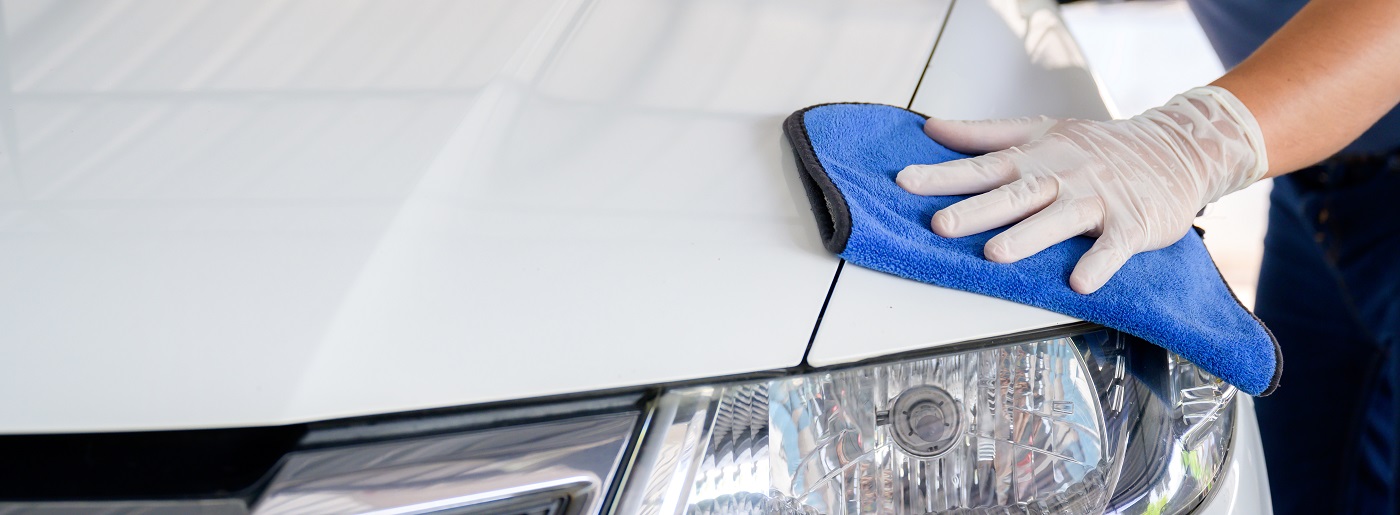Automotive Polishes and Cleaners

Hazardous Ingredients
There are different types of polishes, thus there are different ingredients in the polish depending on the type (water free polishes, emulsion polishes, and solvent free polishes). The most commonly found ingredients are the following: Silicone: Polydimethylsiloxanes, aminofunctional silicones and silicone resins can all be found in car polishes. Volatile silicones, silicone emulsifiers and waxes are also common.
Wax: Natural, synthetic, and refined waxes are used in car polish.
Solvents: Volatile silicones are often an alternative to solvents found in car polish.
Powders: some powders contain Alcan, Sillitin, Kaopolite, and Diafil
Emulsifiers
Thickeners
Petroleum Distillates
Additives: Dies, pigments, fragrances, acrylic, polyurethane, etc.
Proper Use and Disposal
To polish a car, first ensure that the surface of the car is completely clean. FOLLOW THE INSTRUCTIONS ON THE LABEL and focus on one section of the car at a time. Use a damp cotton cloth with a small amount of polish applied to it and rub on sections of the car in a circular motion. When the polish has dried, use a dry towel to buff off the polish. Ensure that there is no runoff into open drains.
As with all dangerous chemicals, all of the product should be used before disposing of empty containers. If you are unable to do so, give the remainder of the polish to a friend or neighbor who will use it. Most collection centers can also recycle hazardous waste if need be. All empty containers should be recycled properly. To find a collection center near you, visit https://www.deq.state.or.us/lq/sw/hhw/collection.htm.
Health hazards
According to the Materiel Safety Data Sheet of three separate brands of Car polishes, the products are eye and skin irritants.
No carcinogenetic harms were reported in the products, however if car polish is ingested one should seek immediate medical attention.
Though no carcinogenetic qualities were reported, many organic solvents found in metal polishes are considered carcinogens and can cause damage to one’s central nervous system.
Car polish can be harmful to aquatic life – runoff should be avoided.
Alternatives
There are a number of alternatives to car polish, but here are some that aren’t toxic to the environment (or your wallet)! Stainless steel car polish First, mix baking soda and a little bit of water to create a thick paste. Rub the paste on stainless steel surfaces of car and then clean with a wet cotton towel.
Toothpaste car polish
Wipe white toothpaste over selected section of the car (do not use gel toothpaste – standard white toothpaste only). Rub with a non-abrasive cloth and then clean with a wet towel or rag. Buff area clean with a clean, dry cloth.
Vinegar car polish (for removing tarnish)
Soak a cloth in vinegar and place over affected area for about ten minutes. Wipe off area with a damp rag and then buff the area clean with a dry cloth.
Rust removing recipe
Rub the rusted area with aluminum foil. Mix three parts of cream of tartar with one part hydrogen peroxide. Wipe rusted areas with the car polish mixture, and buff off with a clean cloth once the mixture has dried.






